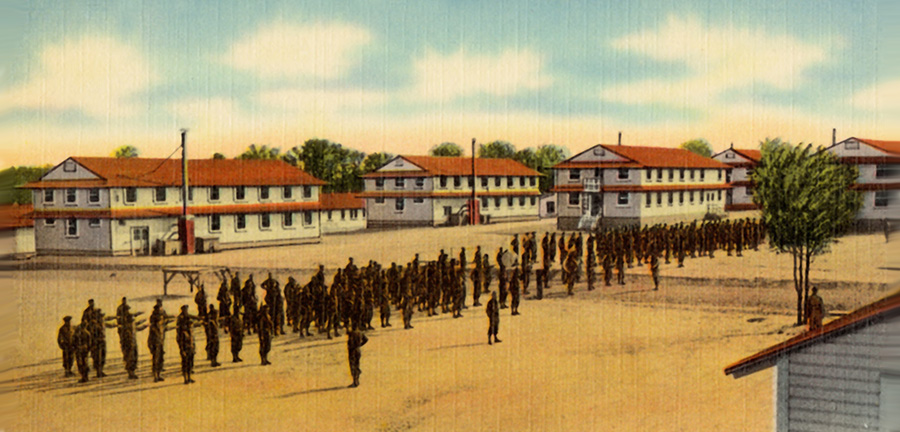Fort Meade History

The creation of Camp Meade was authorized by an Act of Congress in May 1917. It was one of 16 cantonments built for troops drafted for World War I. The Fort’s present site in Central Maryland was selected in June of that year because of its close proximity to the railroad, the Port of Baltimore, and Washington, D.C. The initial construction cost was $18 million and the 1,300 acres of land which were part of the original camp sold for $37 per acre in 1917. Camp Meade was named in honor of Maj. Gen. George Gordon Meade, whose victory at the Battle of Gettysburg in 1863 proved a major factor in turning the tide of the Civil War in favor of the North.

During World War I, more than 400,000 soldiers passed through Camp Meade, which was used as a training site for three infantry divisions, three training battalions and one depot brigade. The post remount station – under the direction of Major Peter F. Meade, a nephew of General Meade – collected more than 22,000 horses and mules during this time. The “Hello Girls” – women who served as bilingual telephone switchboard operators in the U.S. Army Signal Corps during World War I – also were an important part of Fort Meade’s history.
In early 1918, the installation became home to the first unit which would later become the U.S. Army’s Tank Corps. Famous members of the Tank Corps who would play a significant role in developing the Army’s tactics for use of tanks were then – Colonel George S. Patton, and later Colonel Dwight David Eisenhower.
In 1928, the post was renamed Fort Leonard Wood, but Pennsylvania congressmen, angry at having the name of native son George Meade removed, held up the Army’s appropriations until it agreed to name the new permanent installation Fort George G. Meade, which it did on March 5, 1929.
During World War II, Fort Meade became a training center whose ranges and other facilities were used by more than 200 units and roughly 3.5 million soldiers between 1942 and 1946. In March 1945, Fort Meade’s wartime military personnel peaked at 70,000.
After World War II, Fort Meade reverted to routine peacetime activities. In June 1947, the Second U.S. Army Headquarters was transferred from Baltimore to Fort Meade. This transfer increased post activity because Second Army Headquarters exercised command over Army units throughout a seven-state area. In January 1966, the Second U.S. Army merged with the First U.S. Army. The consolidated headquarters moved from Fort Jay, New York to Fort Meade to administer activities of Army installations in a 15-state area.
In August 1990, Fort Meade began processing Army Reserve and National Guard units from several states in support of Operation Desert Shield. In addition, two of Fort Meade’s active duty units – the 85th Medical Battalion and the 519th Military Police Battalion – were sent to Saudi Arabia. In all, approximately 2,700 personnel from 42 units deployed from Fort Meade during Operation Desert Shield/Desert Storm.
